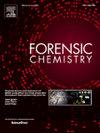Physical (trace) evidence casework including web scraping on demand
IF 2.6
3区 医学
Q2 CHEMISTRY, ANALYTICAL
引用次数: 0
Abstract
Occasionally, trace evidence1-casework faces major challenges, as not only suitable analytical methods must be available for relevant technical products and their traces, but background information regarding market or manufacturing processes must also be collected. Furthermore, analytical and forensic benefit are supposed to go together, in certain cases even under great time pressure. Given the focus of forensic service providers on individual traces, trace evidence work areas may not always be well prepared, particularly for products for which there are no collection traditions. On the basis of three fictitious case studies, an approach based on division of labor is presented and its advantages and disadvantages are discussed.
实物(痕迹)证据个案工作,包括按需进行网络搜索
痕量证据1 案例工作有时会面临重大挑战,因为不仅要有相关技术产品及其痕量的适当分析方法,还必须收集有关市场或制造过程的背景信息。此外,分析和取证工作必须同时进行,在某些情况下甚至要承受巨大的时间压力。鉴于法医服务提供商的重点是单个痕迹,痕迹证据工作领域可能并不总是准备充分,特别是对于没有收集传统的产品。在三个虚构案例研究的基础上,介绍了一种基于分工的方法,并讨论了其优缺点。
本文章由计算机程序翻译,如有差异,请以英文原文为准。
求助全文
约1分钟内获得全文
求助全文
来源期刊

Forensic Chemistry
CHEMISTRY, ANALYTICAL-
CiteScore
5.70
自引率
14.80%
发文量
65
审稿时长
46 days
期刊介绍:
Forensic Chemistry publishes high quality manuscripts focusing on the theory, research and application of any chemical science to forensic analysis. The scope of the journal includes fundamental advancements that result in a better understanding of the evidentiary significance derived from the physical and chemical analysis of materials. The scope of Forensic Chemistry will also include the application and or development of any molecular and atomic spectrochemical technique, electrochemical techniques, sensors, surface characterization techniques, mass spectrometry, nuclear magnetic resonance, chemometrics and statistics, and separation sciences (e.g. chromatography) that provide insight into the forensic analysis of materials. Evidential topics of interest to the journal include, but are not limited to, fingerprint analysis, drug analysis, ignitable liquid residue analysis, explosives detection and analysis, the characterization and comparison of trace evidence (glass, fibers, paints and polymers, tapes, soils and other materials), ink and paper analysis, gunshot residue analysis, synthetic pathways for drugs, toxicology and the analysis and chemistry associated with the components of fingermarks. The journal is particularly interested in receiving manuscripts that report advances in the forensic interpretation of chemical evidence. Technology Readiness Level: When submitting an article to Forensic Chemistry, all authors will be asked to self-assign a Technology Readiness Level (TRL) to their article. The purpose of the TRL system is to help readers understand the level of maturity of an idea or method, to help track the evolution of readiness of a given technique or method, and to help filter published articles by the expected ease of implementation in an operation setting within a crime lab.
 求助内容:
求助内容: 应助结果提醒方式:
应助结果提醒方式:


